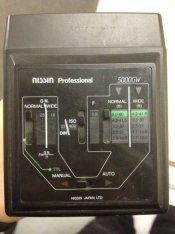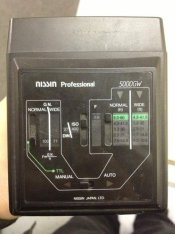For rolls 5 and 6 of my 52 roll project I decided to try manual flash work with my Hasselblad. I've never really done it to the point that I'm fluent in its formula, so this is a perfect time to learn.
I understand that F = GN •/• Distance. So if I set my flash to manual ISO400, with a guide number of 25, then my aperture on my camera should be about f8 right? (f4 for ISO100, f5.6 for ISO200, f11 for ISO800 etc etc)
And if I am thinking correctly, this would only be for stop motion lighting right. Shutter speed would increase or decrease the ambient background lighting indoors right?
In addition, in manual mode on this flash GN 25 is the lowest setting, if I wanted to shoot at f4 instead of f8 according to the formula, my image would be two stops over exposed right? Is there a way to decrease the power further or is this where a ND filter comes into play?
This is what my flash looks like... I plan on bouncing the main head and using the sub flash for fill.



I understand that F = GN •/• Distance. So if I set my flash to manual ISO400, with a guide number of 25, then my aperture on my camera should be about f8 right? (f4 for ISO100, f5.6 for ISO200, f11 for ISO800 etc etc)
And if I am thinking correctly, this would only be for stop motion lighting right. Shutter speed would increase or decrease the ambient background lighting indoors right?
In addition, in manual mode on this flash GN 25 is the lowest setting, if I wanted to shoot at f4 instead of f8 according to the formula, my image would be two stops over exposed right? Is there a way to decrease the power further or is this where a ND filter comes into play?
This is what my flash looks like... I plan on bouncing the main head and using the sub flash for fill.





